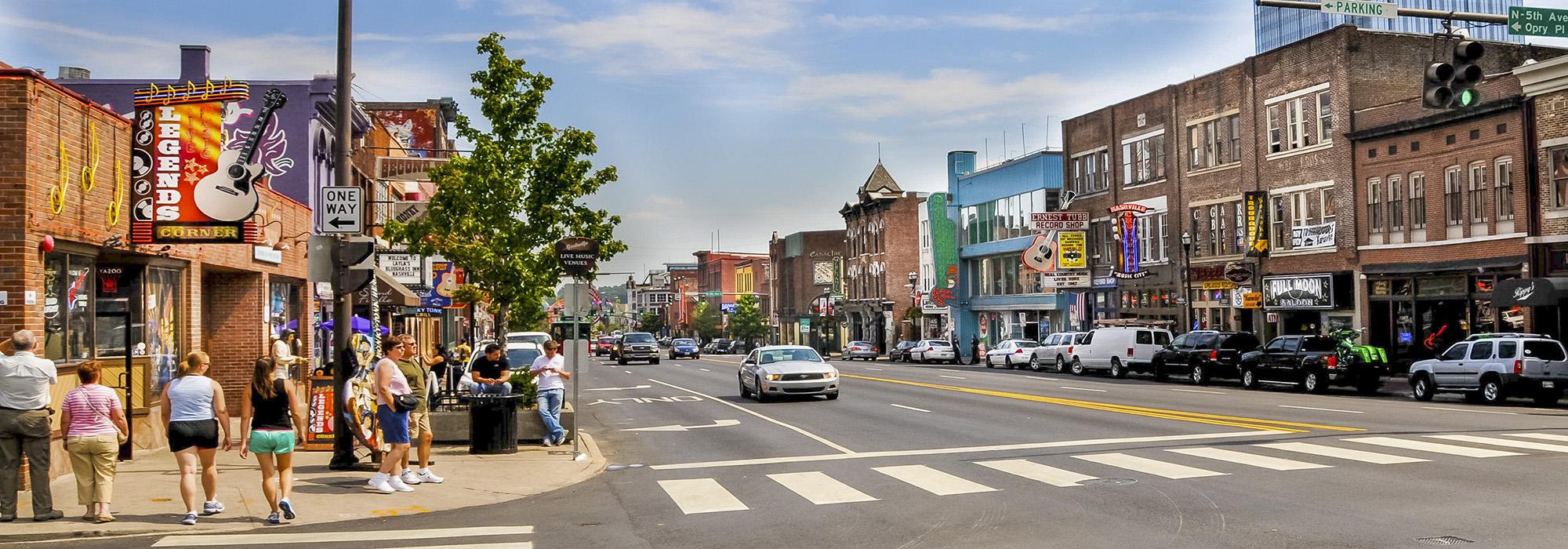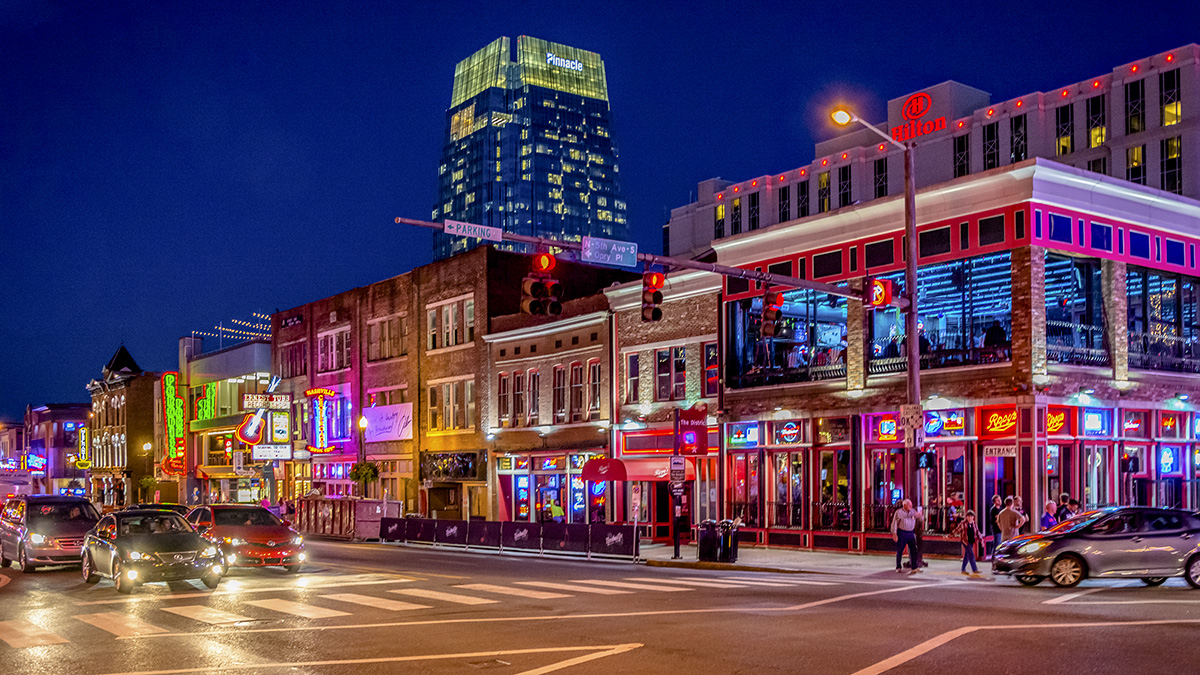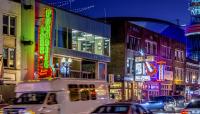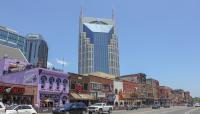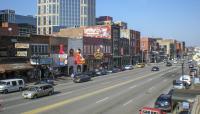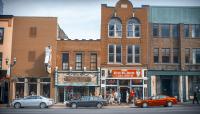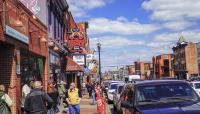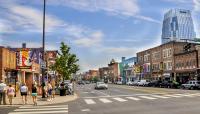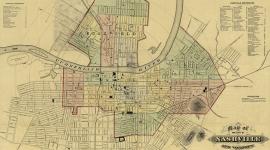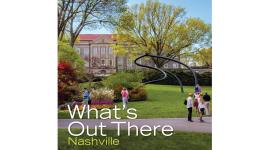Landscape Information
Prominently located in the heart of Nashville’s downtown on the west side of the Cumberland River, this four-block-long pedestrian and vehicular corridor was part of what was initially called Broad Street, which was one of the first streets in the city to be laid out on an east-west axis. Bounded by First and Fifth Avenues, this segment of the street initially served as the main entryway to the city from the busy docks along the river. It was soon populated with commercial buildings, such as the H. Brown Furniture building, which was built in 1860 and is the street’s oldest surviving structure. In the later 1970s and 1980s, the area fell into neglect, signaled by the Grand Ole Opry’s move from the Ryman Auditorium in 1974. Revitalization efforts in the mid-1990s transformed it into a family-oriented tourist destination celebrated for its connection to country music.
Lower Broadway is lined with a mixture of one- to four-story contemporary and Victorian Revival brick buildings, which front a treeless, four-lane street. Wide sidewalks in concrete and brick frame the roadway, punctuated with ornate, dual-lobed lampposts. The area’s fame comes from its honky tonks with large-scale signage consisting of vibrant graphics, neon guitars, cowboy boots, and country music décor, most often attached to the facades of the buildings and overhanging the sidewalk. The structures themselves are also painted with vibrant colors, such as Tootsies Orchid Lounge, with its purple-painted brick façade, and Bailey’s Sports Grille, decorated with graffiti on its exposed fourth-story wall. The modest retail shops, honky-tonk bars, studios, restaurants, and offices all transform at night when the neon signs are illuminated. Lower Broadway forms part of the Broadway Historic District, which was listed in the National Register of Historic Places in 1980. The Ryman Auditorium was designated a National Historic Landmark in 2001.



